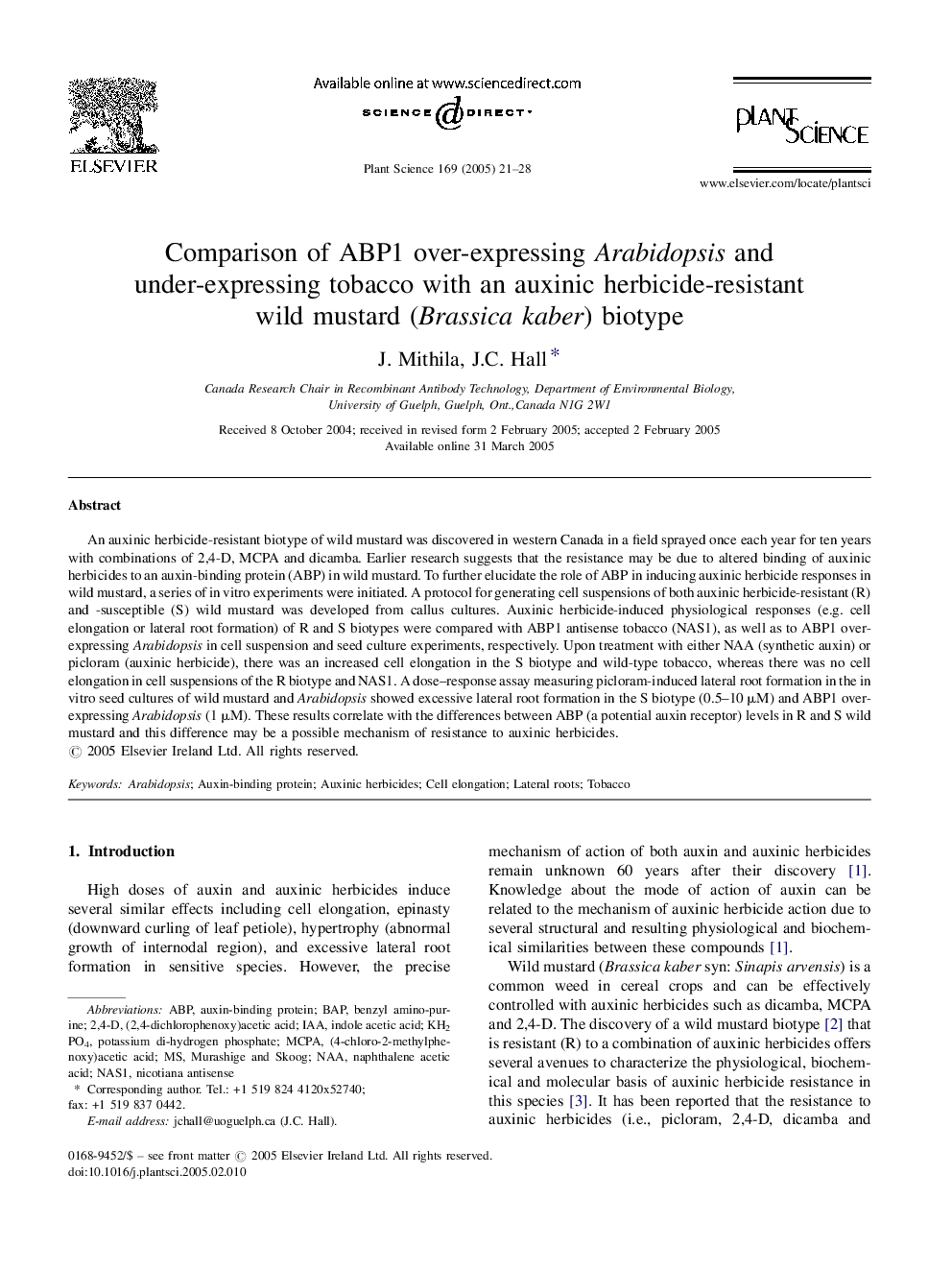| Article ID | Journal | Published Year | Pages | File Type |
|---|---|---|---|---|
| 10841959 | Plant Science | 2005 | 8 Pages |
Abstract
An auxinic herbicide-resistant biotype of wild mustard was discovered in western Canada in a field sprayed once each year for ten years with combinations of 2,4-D, MCPA and dicamba. Earlier research suggests that the resistance may be due to altered binding of auxinic herbicides to an auxin-binding protein (ABP) in wild mustard. To further elucidate the role of ABP in inducing auxinic herbicide responses in wild mustard, a series of in vitro experiments were initiated. A protocol for generating cell suspensions of both auxinic herbicide-resistant (R) and -susceptible (S) wild mustard was developed from callus cultures. Auxinic herbicide-induced physiological responses (e.g. cell elongation or lateral root formation) of R and S biotypes were compared with ABP1 antisense tobacco (NAS1), as well as to ABP1 over-expressing Arabidopsis in cell suspension and seed culture experiments, respectively. Upon treatment with either NAA (synthetic auxin) or picloram (auxinic herbicide), there was an increased cell elongation in the S biotype and wild-type tobacco, whereas there was no cell elongation in cell suspensions of the R biotype and NAS1. A dose-response assay measuring picloram-induced lateral root formation in the in vitro seed cultures of wild mustard and Arabidopsis showed excessive lateral root formation in the S biotype (0.5-10 μM) and ABP1 over-expressing Arabidopsis (1 μM). These results correlate with the differences between ABP (a potential auxin receptor) levels in R and S wild mustard and this difference may be a possible mechanism of resistance to auxinic herbicides.
Keywords
Related Topics
Life Sciences
Agricultural and Biological Sciences
Plant Science
Authors
J. Mithila, J.C. Hall,
